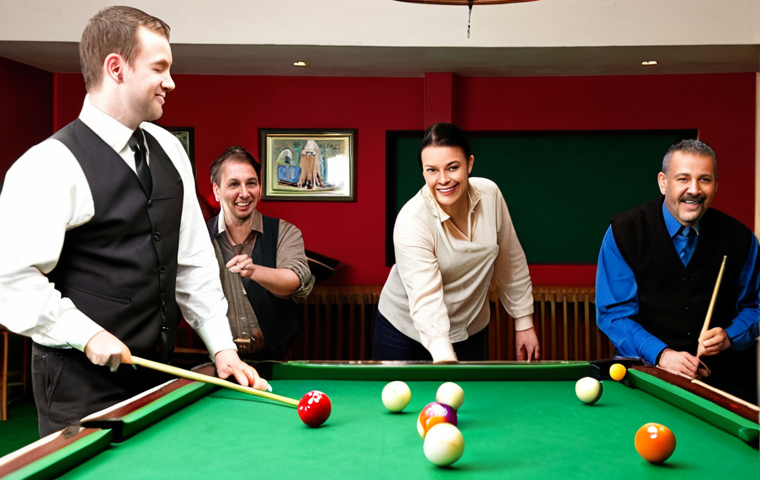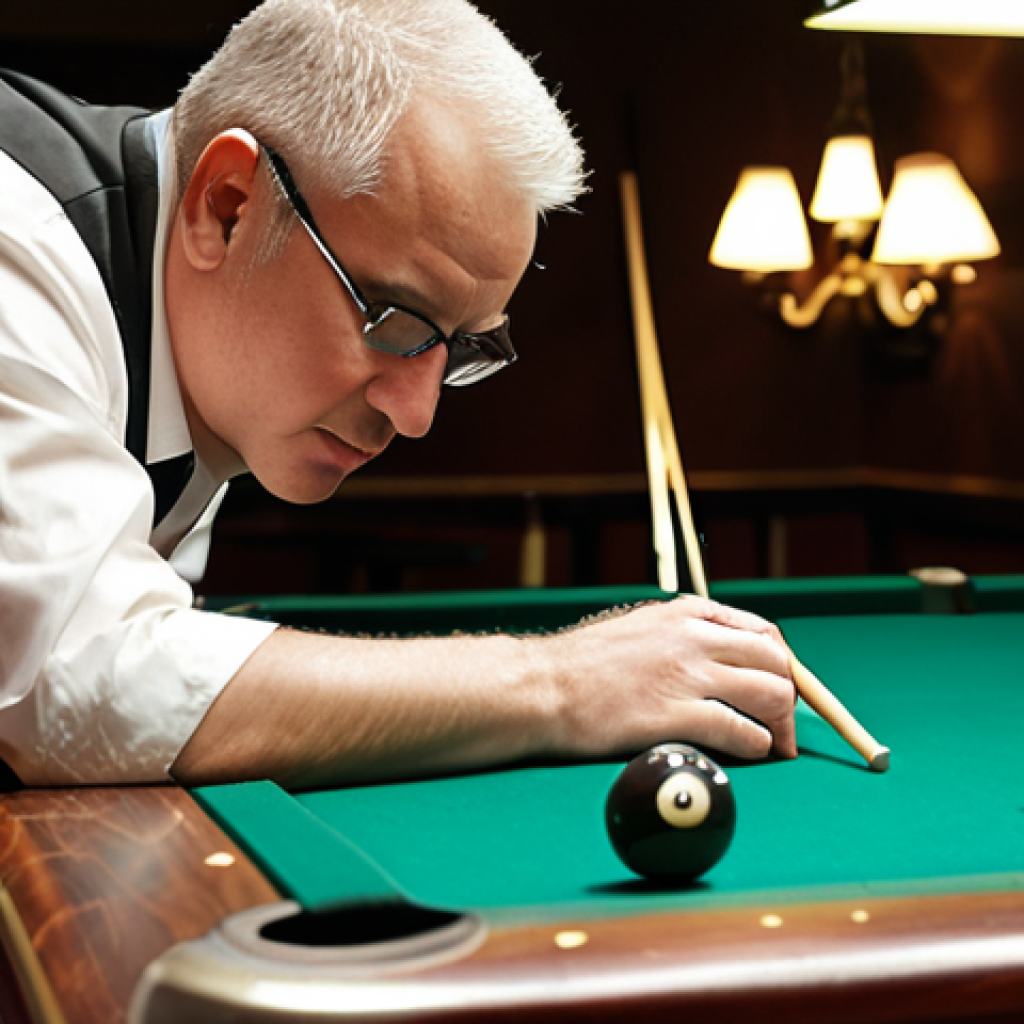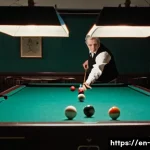Alright, diving into the world of billiards can be super exciting! I remember when I first started, I was all thumbs. But wanting to improve, the big question popped into my head: “How much is this actually gonna cost me?”.
From private coaching sessions to group lessons, the pricing can really vary depending on the instructor’s experience, location and the course content.
Also, with recent trends showing more personalized coaching approaches becoming popular, understanding the cost structures is more important than ever.
So, let’s break it all down in detail and get a clear picture. Let’s find out exactly what we can expect to pay!
Alright, let’s dive in!
Decoding the Billiards Lesson Price Tag: What Factors Influence Cost?

Okay, so you’re ready to up your billiards game. Great! But before you start dreaming of trick shots, let’s talk money.
I remember when I first looked into lessons, I was totally confused by the different prices. Turns out, a whole bunch of things can affect how much you’ll pay.
It’s not just a flat rate. The instructor’s experience, the location, and even the specific things you want to learn all play a role. Let’s break it down.
Instructor Experience: The More Seasoned, the More Green?
Think about it: a coach who’s been playing professionally for years and has a string of successful students is likely going to charge more. They’ve got the knowledge, the experience, and probably a waiting list.
When I was looking for a coach, I found that instructors with 10+ years of experience often charged a premium. But honestly? It was worth it.
Their insights were invaluable. They could spot tiny flaws in my stance that I never would have noticed on my own. One thing I remember distinctly, my pro instructor had me focus on micro-adjustments in my bridge hand, something I’d never even considered before, and it dramatically improved my accuracy.
Location, Location, Location: The City Slicker Premium
Just like real estate, location matters. Lessons in big cities like New York or Los Angeles will generally cost more than those in smaller towns. This is because overhead costs for the instructors – like renting space in a billiards hall – are higher.
Plus, there’s usually more demand in urban areas, which drives up prices. When I lived in LA, I noticed a significant price difference compared to when I took lessons in a smaller city in Arizona.
Sometimes, even the neighborhood matters! A lesson in Beverly Hills will likely cost more than one in a less affluent area.
Specialized Skills: Mastering the Artistic Game
Are you just trying to improve your basic shots, or are you looking to learn advanced techniques like jump shots or masse shots? Specialized instruction often comes at a higher price.
Think of it like this: you wouldn’t expect a general practitioner to perform heart surgery, right? Similarly, you need a specialist to teach you the really complex stuff.
When I was trying to learn jump shots, I realized I needed someone who really understood the physics behind it. I ended up paying a bit more for a specialized instructor, but it was worth it to finally be able to nail those tricky shots.
Group Hustle vs. Solo Grind: Unveiling the Benefits of Each Approach
Now, let’s talk about the format of your lessons. Do you learn better in a group setting, or do you prefer one-on-one attention? This choice can significantly impact the cost.
Group lessons are generally cheaper because the instructor is dividing their time among multiple students. However, you might not get the same level of personalized feedback as you would in a private session.
On the flip side, private lessons offer tailored instruction but come with a higher price tag. It’s a trade-off, really.
The Economics of Group Gatherings: Strength in Numbers, Savings in Your Pocket
Group lessons are a great option if you’re on a budget or if you enjoy learning in a social environment. The cost is usually lower because the instructor is teaching multiple students at once.
I’ve found that it’s also a great way to meet other players and learn from their mistakes (and successes!). The downside, of course, is that you don’t get as much individual attention.
The instructor has to divide their time, so you might not get as much specific feedback on your technique. But, for learning basic fundamentals, group lessons can be a super cost-effective way to get started.
The Personalized Touch: When One-on-One Attention Justifies the Expense
Private lessons are all about you. You get the instructor’s undivided attention, and they can tailor the lesson to your specific needs and goals. This is especially beneficial if you have specific areas you want to improve or if you learn best with personalized instruction.
When I was struggling with my break shot, I opted for a few private lessons. The instructor was able to analyze my technique in detail and give me specific drills to work on.
It made a huge difference, but it definitely cost more than the group classes I had been taking.
Striking a Balance: Mixing Group Dynamics with Personalized Guidance
Some instructors offer a hybrid approach, combining group lessons with occasional private sessions. This can be a great way to get the benefits of both worlds.
You can learn the fundamentals in a group setting and then get personalized feedback in private sessions to address your specific weaknesses. It’s also a good way to spread out the cost over time.
I’ve found that this approach works well for me. I like the social aspect of group lessons, but I also appreciate the focused attention of private sessions when I’m working on something specific.
Decoding Package Deals: Are Bundled Lessons a Smart Investment?
Many instructors offer package deals, where you can purchase a block of lessons at a discounted rate. This can be a great way to save money in the long run, but it’s important to do your research and make sure you’re committing to the right instructor.
Before you sign up for a package deal, ask yourself: Do I like this instructor’s teaching style? Am I making progress? Do I feel comfortable with them?
Long-Term Commitment or Financial Trap? Evaluating the Pros and Cons
Package deals can offer significant savings, but they also require a commitment. Make sure you’re comfortable with the instructor’s teaching style and that you’re seeing progress before you commit to a package.
I once signed up for a package deal with an instructor whose teaching style didn’t really click with me. I ended up feeling stuck, and I didn’t get as much out of the lessons as I had hoped.
It was a valuable lesson: don’t just jump at a discount; make sure it’s the right fit first.
Assessing Your Needs: Are You Ready for a Marathon or a Sprint?
Think about your goals and how much time you’re willing to commit to lessons. If you’re serious about improving your game, a package deal might be a good option.
But if you’re just starting out or if you have a busy schedule, you might be better off paying for individual lessons as you go. When I was training for a local tournament, I knew I needed to put in a lot of hours, so a package deal made sense.
But when I’m just playing for fun, I prefer the flexibility of individual lessons.
Unlocking Hidden Value: What Extras are Included in the Package?
Sometimes, package deals include extras like access to practice tables, video analysis of your technique, or even discounts on equipment. Be sure to ask about these perks when you’re comparing packages.
I once found a package deal that included free access to the billiards hall during off-peak hours. It was a huge bonus because it allowed me to practice what I was learning without having to pay extra for table time.
Beyond the Hourly Rate: Hidden Costs to Consider
Don’t forget to factor in other costs besides the hourly rate for lessons. These can include travel expenses, equipment costs, and membership fees. It’s easy to focus on the price per hour, but those extra expenses can add up quickly.
The Commute Conundrum: Calculating Travel Time and Expenses
If you have to drive a long distance to your lessons, the cost of gas and time can add up. Consider whether there are any instructors closer to home, even if they charge a bit more per hour.
Sometimes, the convenience is worth the extra cost. I used to drive an hour each way to take lessons from a well-known instructor. Eventually, I realized that the gas and time I was spending were negating any savings I was getting from the lower hourly rate.
Gear Up or Make Do? Navigating Equipment Costs
You don’t necessarily need to buy a fancy cue right away, but you’ll probably want to invest in a decent cue at some point. Also, consider other equipment like a glove, chalk, and a case.
These costs can add up, so factor them into your budget. When I first started, I borrowed a cue from a friend. But as I got more serious, I realized that having my own cue made a big difference.
It felt more comfortable in my hand, and it gave me more confidence.
Membership Matters: Weighing the Benefits of Joining a Billiards Club
Some billiards halls require you to be a member to take lessons. Membership fees can range from a few dollars a month to hundreds of dollars a year. Consider whether the benefits of membership – like discounted table time or access to tournaments – are worth the cost.
I joined a billiards club once, and it was a great way to meet other players and practice my skills. But I didn’t use the facilities enough to justify the annual fee, so I eventually canceled my membership.
Maximizing Your Investment: Tips for Getting the Most Out of Your Lessons
Once you’ve decided to invest in billiards lessons, it’s important to make the most of them. Here are some tips to help you get the most bang for your buck.
Active Engagement: Being a Proactive Student, Not Just a Passive Listener
Don’t just show up and go through the motions. Ask questions, take notes, and actively participate in the lesson. The more engaged you are, the more you’ll learn.
I used to be a passive student, just listening to the instructor and nodding along. But then I realized that I wasn’t really retaining the information.
Now, I make sure to ask questions and take notes so I can review the material later.
Practice Makes Permanent: Implementing Drills and Techniques Outside of Class
The real learning happens when you practice what you’ve learned in your own time. Set aside time to practice the drills and techniques your instructor has taught you.
I try to practice for at least an hour a week, even if it’s just on my own. It makes a huge difference in my progress.
Consistent Communication: Maintaining Open Dialogue with Your Instructor
Let your instructor know what you’re struggling with and what you want to work on. The more they know about your needs, the better they can tailor the lessons to you.
I used to be afraid to tell my instructor when I was struggling with something. But then I realized that they were there to help me. Now, I’m much more open about my challenges, and it’s made a big difference in my progress.
| Lesson Type | Average Cost per Hour | Pros | Cons |
|---|---|---|---|
| Group Lessons | $25 – $50 | Lower cost, social environment | Less individual attention |
| Private Lessons | $50 – $100+ | Personalized instruction, tailored feedback | Higher cost |
| Package Deals | Varies | Potential cost savings, commitment to improvement | Requires upfront investment, may not be a good fit |
The ROI of Billiards Lessons: Is It Worth the Investment?
So, you’ve weighed the costs, considered the options, and maybe even taken a few lessons. But is it really worth it? The answer, of course, depends on your goals and how much you value improving your game.
Tangible Benefits: Beyond the Table, What Skills Translate to Life?
Billiards lessons can teach you more than just how to shoot a cue ball. They can also improve your focus, strategy, and problem-solving skills. These skills can be valuable in other areas of your life, like work and relationships.
I’ve noticed that my focus has improved since I started taking billiards lessons. I’m better able to concentrate on tasks at work, and I’m less easily distracted.
The Intangible Rewards: Confidence, Community, and the Joy of Improvement
Beyond the tangible benefits, billiards lessons can also provide intangible rewards like increased confidence, a sense of community, and the joy of seeing yourself improve.
These rewards can be just as valuable as the skills you learn. I’ve made some great friends through billiards, and I’ve gained a lot of confidence in my abilities.
It’s a great feeling to see myself progress and to know that I’m getting better at something I enjoy.
Defining Success: Aligning Your Expectations with Realistic Goals
Before you invest in billiards lessons, take some time to define what success means to you. Are you trying to become a professional player? Or are you just trying to improve your game and have more fun?
Setting realistic goals will help you stay motivated and avoid disappointment. I’m not trying to become a professional player, but I am trying to improve my game and have more fun.
Setting that goal has helped me stay motivated and focused on my progress. Alright, here it is:
Wrapping It Up
So, whether you’re looking to impress on a date night or dominate the local billiards scene, understanding the costs involved in lessons is key. Remember to consider the instructor’s experience, location, and whether you prefer a group or individual setting. Ultimately, the investment in your skills can pay off in confidence, community, and a whole lot of fun. Good luck, and may your aim be true!
Handy Information to Keep in Your Pocket
1. Check Local Billiards Halls: Many halls offer beginner courses at discounted rates. It’s a great way to get your feet wet without breaking the bank.
2. Online Resources: Platforms like YouTube have a ton of free tutorials. While they can’t replace a live instructor, they can supplement your learning. Look for channels run by certified billiards coaches.
3. Used Equipment: Don’t feel pressured to buy a brand-new cue right away. Check out local pawn shops or online marketplaces for good deals on used equipment. Just make sure to inspect it carefully before buying.
4. Practice Partners: Find a friend or fellow enthusiast to practice with. Not only is it more fun, but you can learn from each other and provide valuable feedback.
5. Consider a Clinic: Some instructors offer weekend clinics or workshops that cover specific topics. These can be a more affordable way to get intensive training in a short period of time.
Key Takeaways
Factors like the instructor’s experience and location significantly affect the cost of lessons. Group lessons are budget-friendly, while private lessons offer personalized attention. Package deals can save money, but ensure they fit your needs and the instructor’s style. Hidden costs like travel and equipment should be considered. Actively engage in lessons, practice consistently, and communicate openly with your instructor to maximize your investment.
Frequently Asked Questions (FAQ) 📖
Q: What factors typically affect the cost of billiards lessons or coaching sessions?
A: Well, from my experience, the price can change a lot based on a few things. The coach’s reputation definitely plays a part – a well-known, experienced instructor usually charges more.
Where you are located matters too; lessons in a big city tend to be pricier than in smaller towns. Also, whether you’re going for private one-on-one sessions or joining a group class will influence the cost.
Finally, the length and the content of the coaching course also matters, since specialized courses that cover advanced techniques can increase the price considerably.
Q: Are there any hidden costs I should be aware of when considering billiards lessons?
A: That’s a good question! It’s not always just the hourly rate or course fee you need to think about. Sometimes, you might have to pay for table time at a billiards hall if the lessons aren’t held at the instructor’s private table.
You may also need to buy your own cue, chalk, or other accessories, especially if you’re serious about improving. So, while it seems straightforward, be sure to ask about all those potential add-ons to get the full picture.
Q: Can you give me a realistic range of what I might expect to pay for a series of beginner billiards lessons?
A: Based on what I’ve seen, for a beginner, you could be looking at anywhere from $30 to $75 per hour for private lessons, depending on the instructor. If you opt for group classes, those are generally cheaper, maybe around $20 to $40 per class.
If you signed up for a package of, let’s say, 10 lessons, the total cost could range from $300 to $750 for private lessons, or $200 to $400 for group classes.
Remember, this is just a rough estimate, so it’s always best to check with local instructors or billiards academies for more accurate pricing.
📚 References
Wikipedia Encyclopedia
구글 검색 결과
구글 검색 결과
구글 검색 결과
구글 검색 결과






